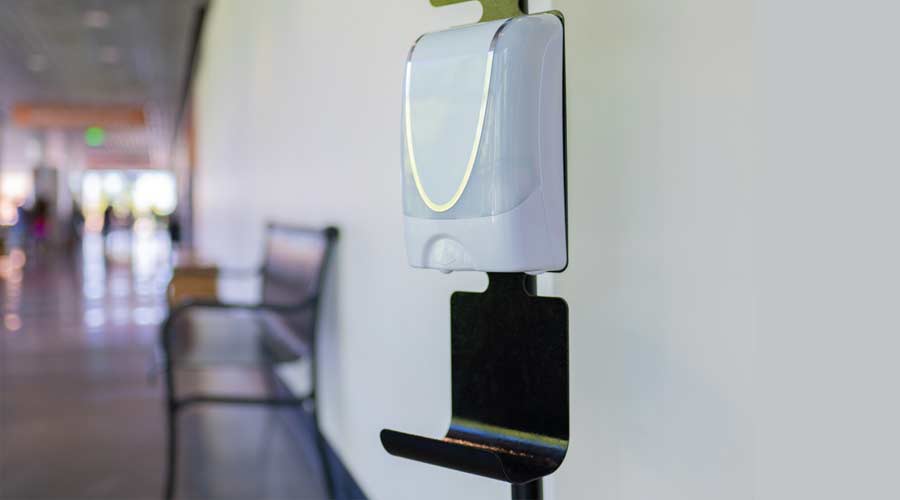
No doubt, health and safety benefits are paramount when extolling the virtues of cartridge soap dispensers. Unlike bulk systems that expose their contents to the outside air when replenished, soap cartridges are sealed so that custodians are, in essence, installing a brand-new dispenser each time they change a cartridge.
Additionally, time and labor savings are significant advantages that can sway customers to switch from bulk to sealed systems.
“Refilling a bulk-soap container is messier and more time-consuming,” notes Fein. “With a sealed system, you don’t have to deal with spills, and the foam soap system lasts longer so you don’t have to refill it as often.”
Cartridge dispensers also translate into time savings for end users, as well as a better handwashing experience — both of which promote compliance.
“Most of the new systems are foam, which makes it easier to get a good quality hand wash,” says Fein. “A lot of bulk systems use lotion soap, and people have to work a lot harder to work that into a lather.”
Custodians also have to work harder to maintain bulk soap dispensers. In contrast, cartridges are quick and easy to change out, which makes training a cinch for BSCs.
“The majority of closed systems are straightforward, so it’s a one-time lesson,” says Goldin. “Generally, the dispensers open with the push of a button, and there’s only one way for the cartridge to go in, so it’s foolproof.”
Not only does the cartridge system prevent custodians from inserting the wrong product or inserting the product incorrectly, but it also ensures that they cannot mix different types of soaps or hand sanitizers, which could potentially affect the soap’s efficacy.
While the true value of a closed system is piece of mind for both BSCs and customers, there is something to be said for the unit’s appearance and the image it conveys to end users about the facility.
“For some customers, the design and architecture of a restroom is very important,” says Goldin. “Even for customers that don’t want to see a dispenser on the wall, there are options: Traditionally, under-counter options have been bulk fill, but today there are closed container systems for under the counter as well.”
Indispensable Dispensers
No discussion of cartridge soap systems would be complete without touching on their environmental impacts. As more and more businesses prioritize sustainability initiatives, customers are less likely to turn a blind eye to the waste generated by one-time use cartridges with a pump and sprayer. Goldin says the onus is on BSCs to seek out the most environmentally responsible systems.
“There are systems available that use recycled content, and all of their parts are recyclable,” he says. “It’s up to us to educate our customers about all of these options.”
For customers that are considering switching from a bulk to a sealed dispenser, or for those who are not sure what type of sealed system to purchase for their business, many distributors offer a try-and-buy program.
“If clients have reservations about a sealed system, we’ll send a sample and install it in a high-use area of the facility so they can test it,” Fein says. “If they try it and like it, they can buy it.”
Goeres notes that it’s important for BSCs and their customers to conduct a risk-benefit analysis of their entire hand hygiene program — and soap dispensers are a vital part of that equation.
Kassandra Kania is based out of Charlotte, North Carolina, and is a frequent contributor to Contracting Profits.
What You Need to Know About Sealed Soap Dispensers

 Celebrating BSCAI's 60th Anniversary eBook
Celebrating BSCAI's 60th Anniversary eBook The Down and Dirty on Cleaning in Virus Season
The Down and Dirty on Cleaning in Virus Season How Surfactant Use is Expanding in Commercial Cleaning
How Surfactant Use is Expanding in Commercial Cleaning